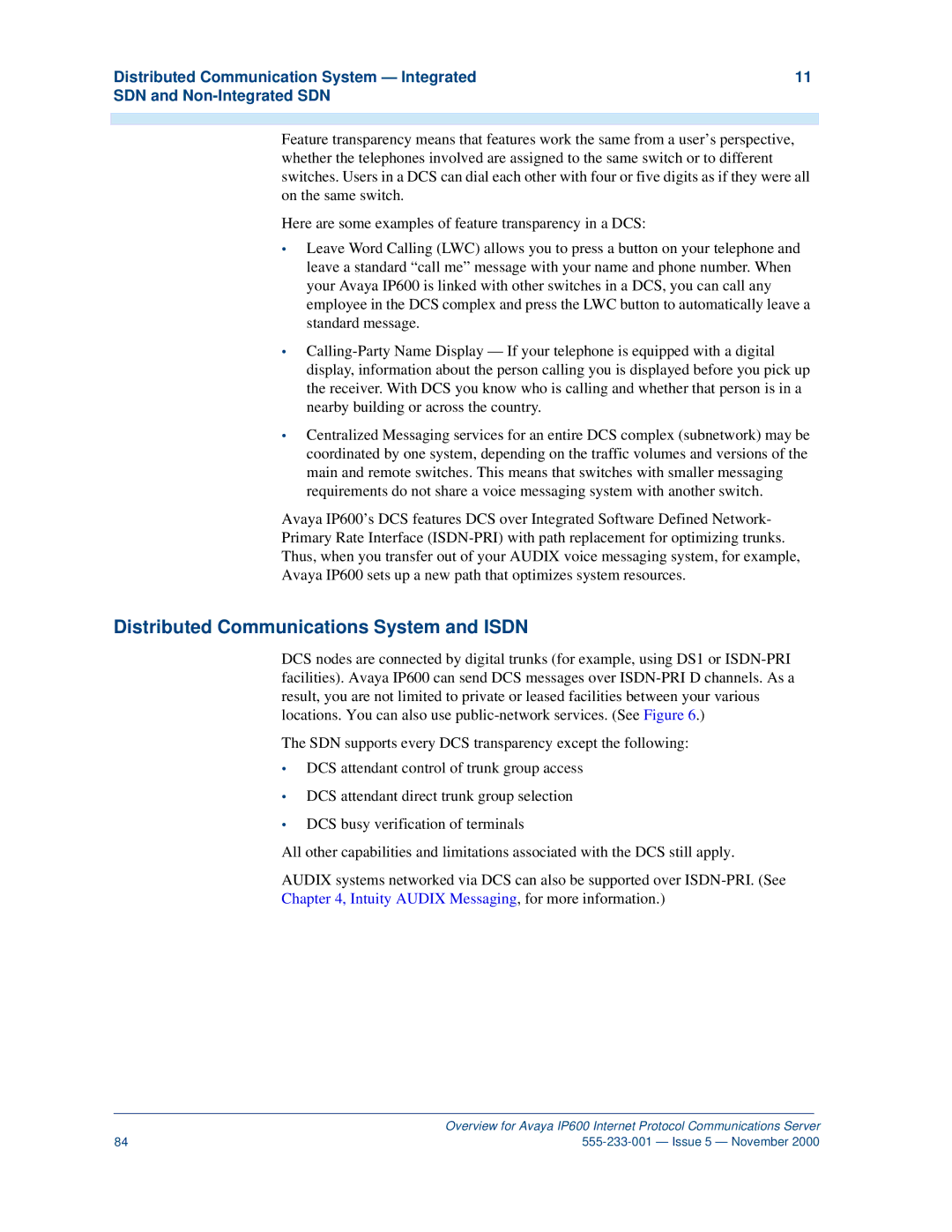Distributed Communication System — Integrated | 11 |
SDN and |
|
|
|
|
|
Feature transparency means that features work the same from a user’s perspective, whether the telephones involved are assigned to the same switch or to different switches. Users in a DCS can dial each other with four or five digits as if they were all on the same switch.
Here are some examples of feature transparency in a DCS:
•Leave Word Calling (LWC) allows you to press a button on your telephone and leave a standard “call me” message with your name and phone number. When your Avaya IP600 is linked with other switches in a DCS, you can call any employee in the DCS complex and press the LWC button to automatically leave a standard message.
•
•Centralized Messaging services for an entire DCS complex (subnetwork) may be coordinated by one system, depending on the traffic volumes and versions of the main and remote switches. This means that switches with smaller messaging requirements do not share a voice messaging system with another switch.
Avaya IP600’s DCS features DCS over Integrated Software Defined Network-
Primary Rate Interface
Thus, when you transfer out of your AUDIX voice messaging system, for example,
Avaya IP600 sets up a new path that optimizes system resources.
Distributed Communications System and ISDN
DCS nodes are connected by digital trunks (for example, using DS1 or
The SDN supports every DCS transparency except the following:
•DCS attendant control of trunk group access
•DCS attendant direct trunk group selection
•DCS busy verification of terminals
All other capabilities and limitations associated with the DCS still apply.
AUDIX systems networked via DCS can also be supported over
Chapter 4, Intuity AUDIX Messaging, for more information.)
| Overview for Avaya IP600 Internet Protocol Communications Server |
84 |
